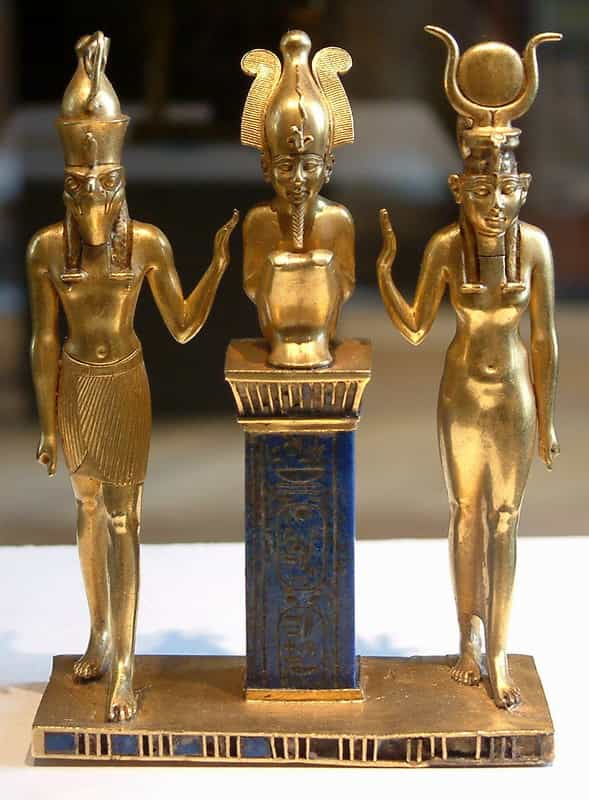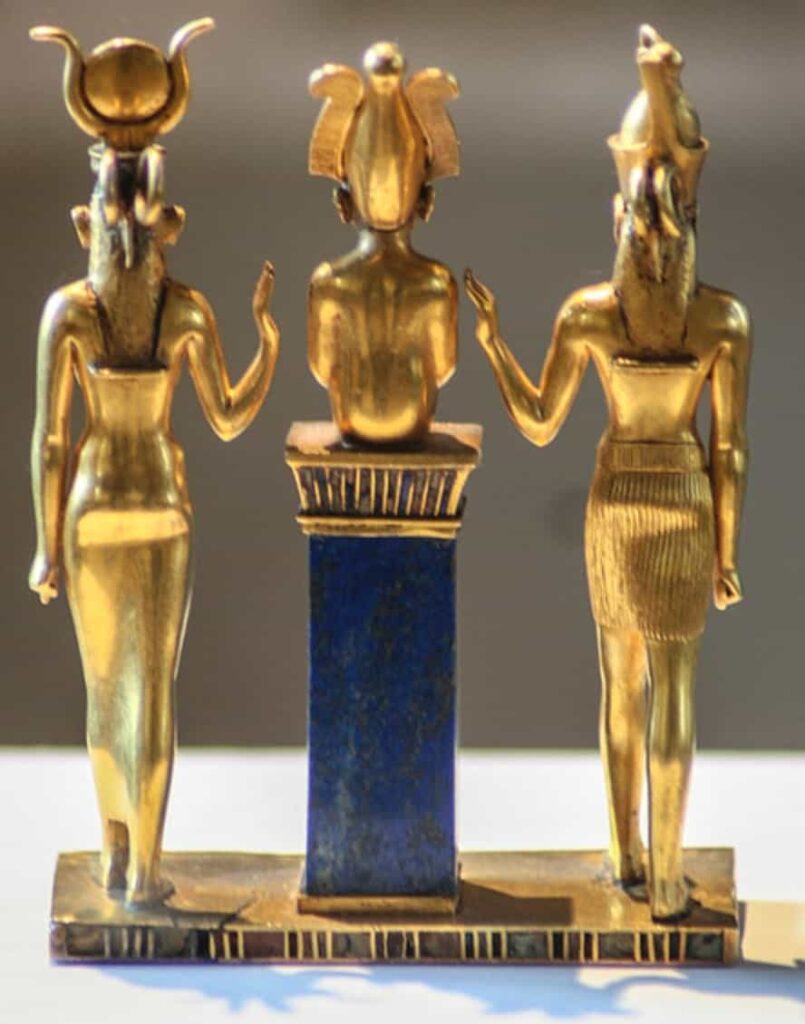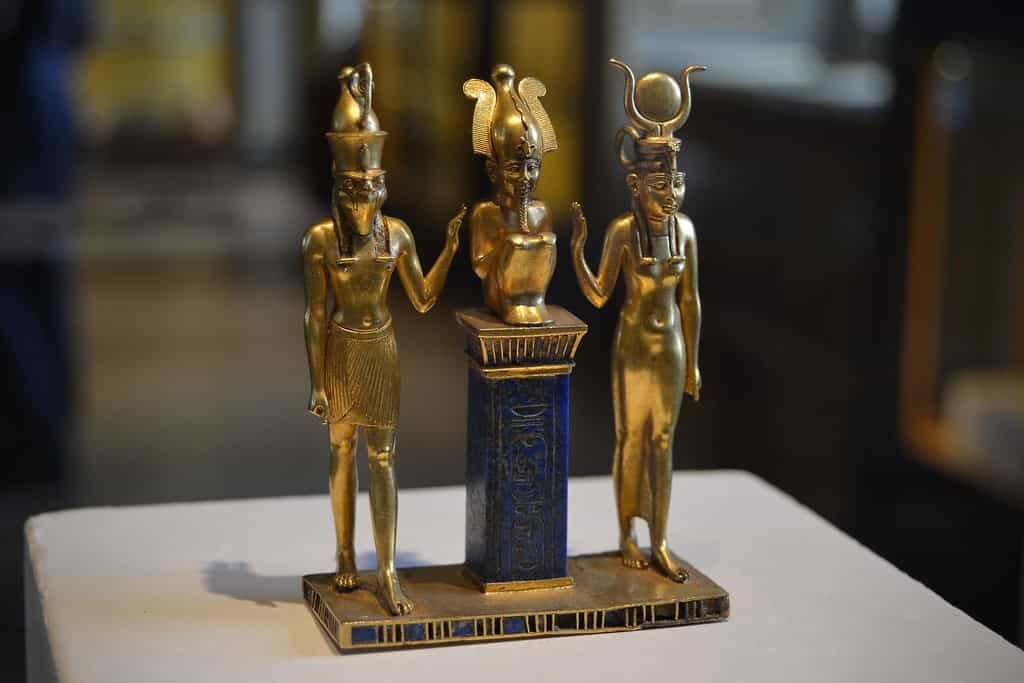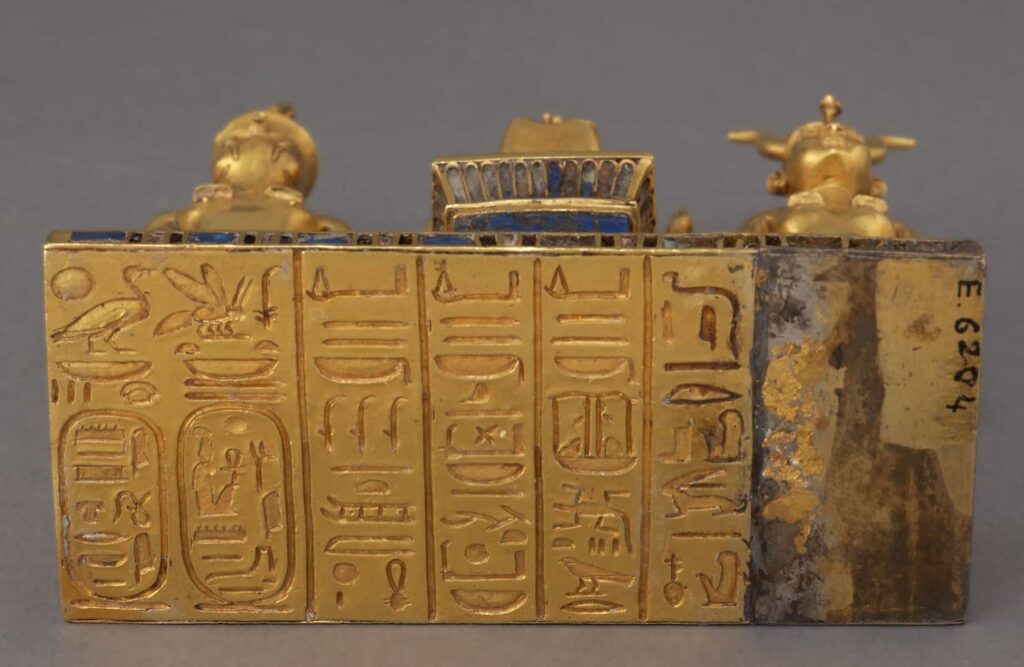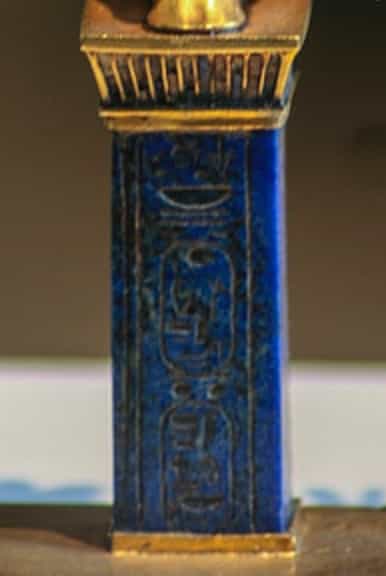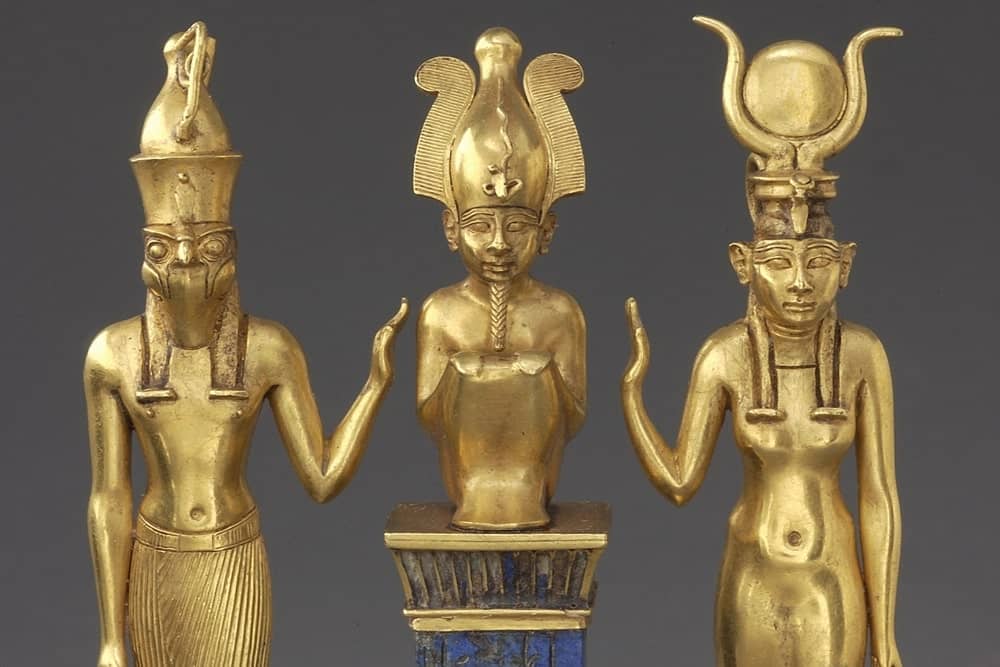The Triad of King Osorkon II is a jewel dated approximately between 945 BC and 715 BC, belonging to ancient Egyptian art.
Specifically, it was made by Egyptian goldsmiths during the Twenty-second Dynasty, corresponding to the third intermediate period of ancient Egypt.
Although found in the Tanis necropolis, the year of its discovery is unknown.
In ancient times, it was an important, strategic, and commercial city located east of the Nile River Delta, Egypt.
In 1872, the Louvre Museum in Paris (France) acquired this work of art from the antiquarians “Rollin et Feuardent” for 25,000 francs.
Since then, it has been a part of the museum’s permanent art collection in the department of Egyptian antiquities.
Description
It has a height of 9 cm and a width of 6 cm. It is made of three materials: gold, lapis lazuli, and red glass.
In the Triad of King Osorkon II, three figures are represented—three gods of ancient Egyptian mythology.
On the left, the goddess Isis is represented (known as the great mother goddess, goddess of motherhood and birth), wife and sister of the god Osiris and mother of the god Horus.
On the right, the god Horus is represented (considered the initiator of ancient Egyptian civilization and the god of heaven, war, and hunting), the son of the god Osiris and the goddess Isis.
In the center, the god Osiris is represented (the god of resurrection, vegetation, and agriculture, he is also considered a symbol of fertility and the regeneration of the Nile River), and he is the father of the god Horus and husband of the goddess Isis.
It should be noted that when these three divinities are represented together, they are known by the name of the “Osirian triad.”
The three sculptures are made of gold, and the goddess Isis (right) is represented with cow horns and the solar disk, while the god Horus (left) is represented with the head of a falcon and a double crown.
The god Osiris (in the middle) is represented with a shroud and the Atef crown; he is also represented on a quadrangular pillar of lapis lazuli.
There is an inscription written in hieroglyphic script on the pillar where the cartouche appears with the name of Pharaoh Osorkon II (also known as Usermaatre Setepenamun Osorkon II).
Some researchers think that thanks to this inscription, a closer approximation of the production date is possible, dating it to approximately between the years 874 BC and 830 BC.
It is particularly interesting how the two lateral figures (the divinities Horus and Isis) are represented in the composition, where they extend their hands in a protective gesture.
In addition, they are represented with their left leg and foot forward, while their right leg and foot are represented behind.
It should be noted that these two representations are characterized by their rigidity, one of the characteristics of ancient Egyptian sculpture.
As for the representation of the god Osiris, it is reduced to a cube statue, where the anatomical study is reduced as far as possible (when compared to the anatomical representation of the other two figures).
The entire set is supported on a rectangular base made of gold inlaid with lapis lazuli and glass.
It is currently on display at the Louvre Museum in Paris, France.
